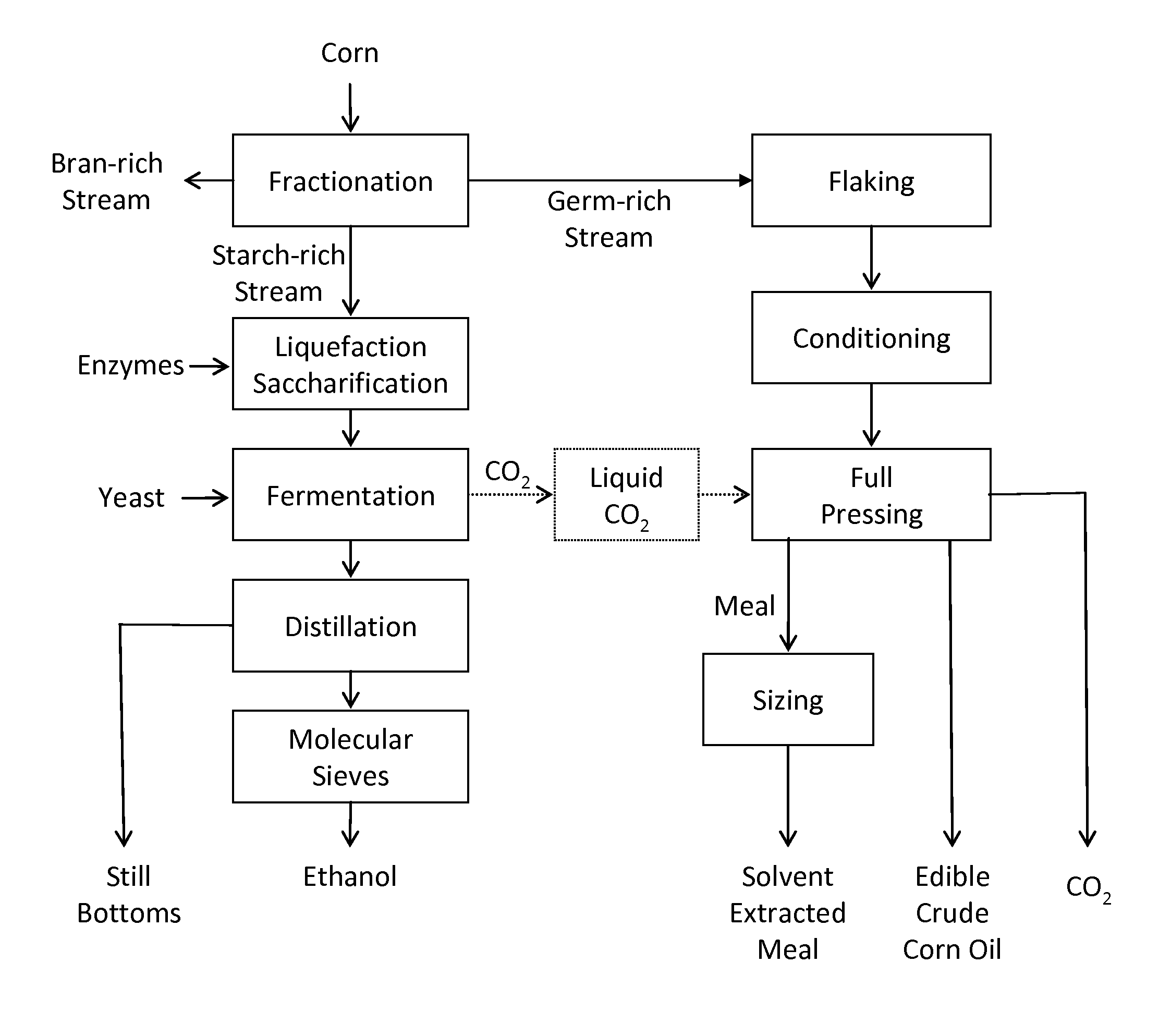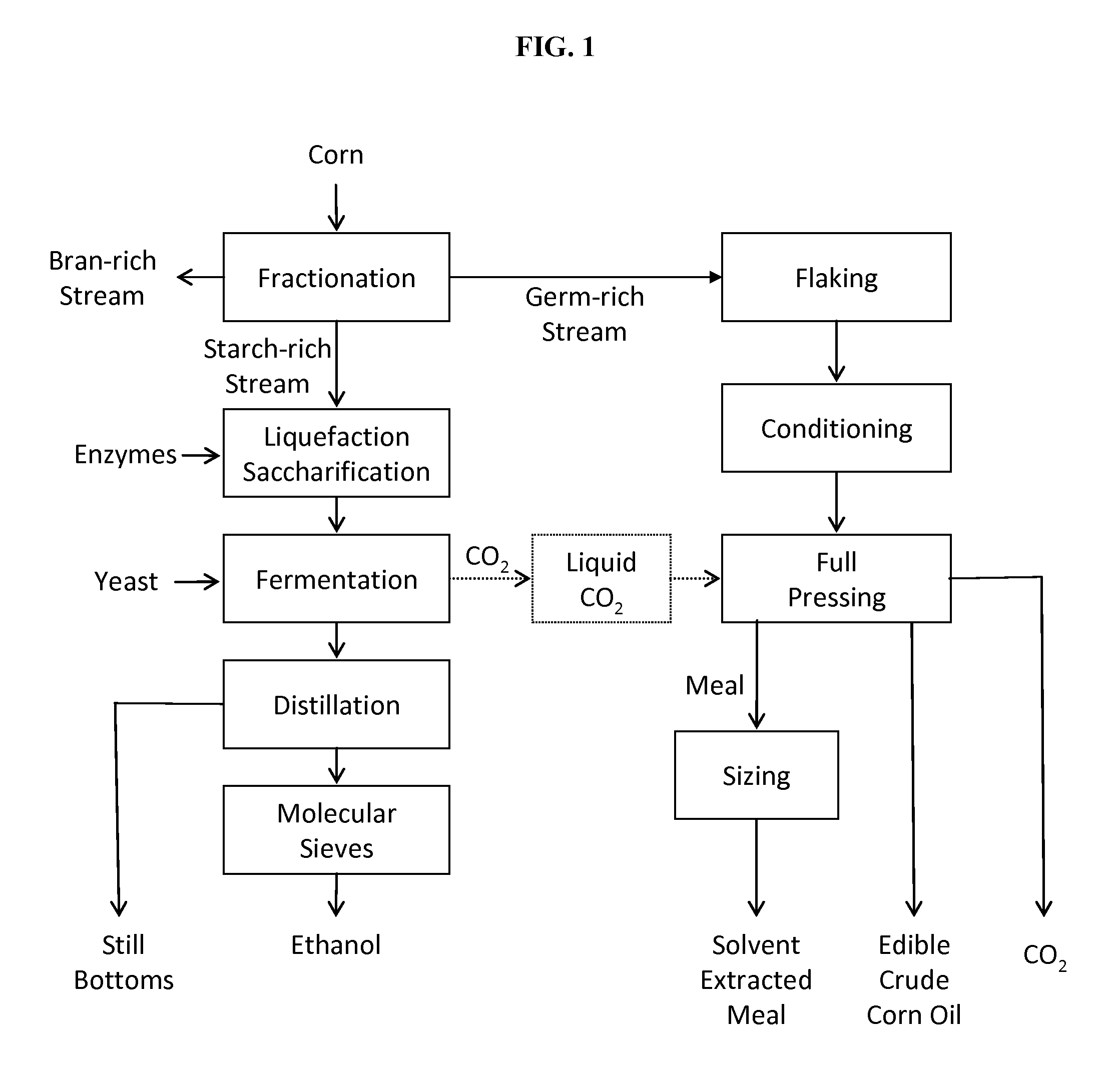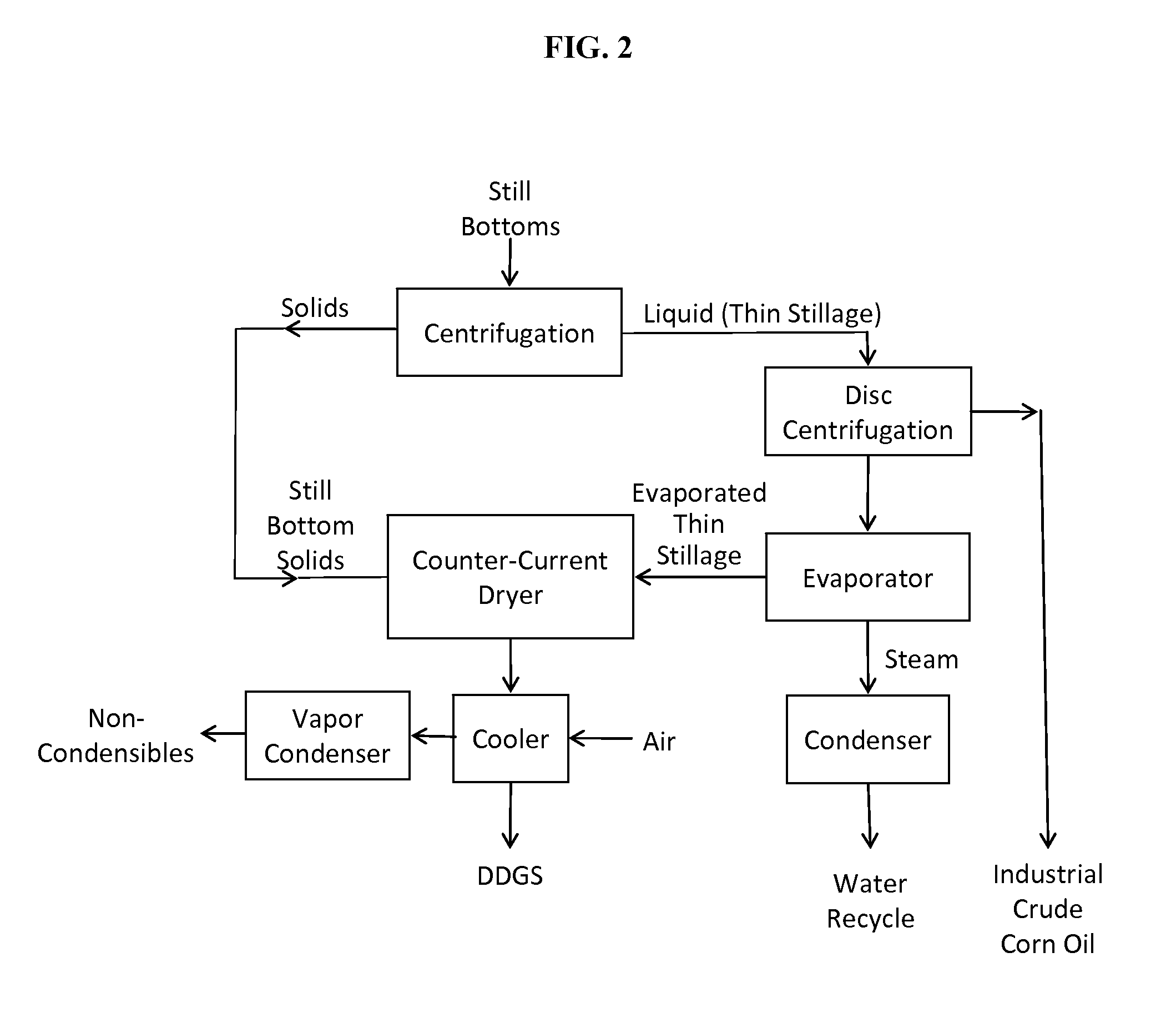Processes and systems for dry-milled corn ethanol and corn oil production with improved carbon footprint
a technology of dry milling corn and carbon footprint, which is applied in the direction of machines/engines, lighting and heating apparatus, furniture, etc., can solve the problems of adversely affecting air quality, ddgs) is a very inefficient single-pass rotary drying system, and the industry continues to use relatively energy-inefficient unit operations, etc., to achieve the effect of increasing the overall ethanol yield
- Summary
- Abstract
- Description
- Claims
- Application Information
AI Technical Summary
Benefits of technology
Problems solved by technology
Method used
Image
Examples
Embodiment Construction
[0056]Certain embodiments of the present invention will now be further described in more detail, in a manner that enables the claimed invention so that a person of ordinary skill in this art can make and use the present invention.
[0057]Unless otherwise indicated, all numbers expressing reaction conditions, concentrations, yields, and so forth used in the specification and claims are to be understood as being modified in all instances by the term “about.” Accordingly, unless indicated to the contrary, the numerical parameters set forth in the following specification and attached claims are approximations that may vary depending at least upon the specific analytical technique. Any numerical value inherently contains certain errors necessarily resulting from the standard deviation found in its respective testing measurements.
[0058]As used in this specification and the appended claims, the singular forms “a,”“an,” and “the” include plural referents unless the context clearly indicates o...
PUM
 Login to View More
Login to View More Abstract
Description
Claims
Application Information
 Login to View More
Login to View More - R&D
- Intellectual Property
- Life Sciences
- Materials
- Tech Scout
- Unparalleled Data Quality
- Higher Quality Content
- 60% Fewer Hallucinations
Browse by: Latest US Patents, China's latest patents, Technical Efficacy Thesaurus, Application Domain, Technology Topic, Popular Technical Reports.
© 2025 PatSnap. All rights reserved.Legal|Privacy policy|Modern Slavery Act Transparency Statement|Sitemap|About US| Contact US: help@patsnap.com



